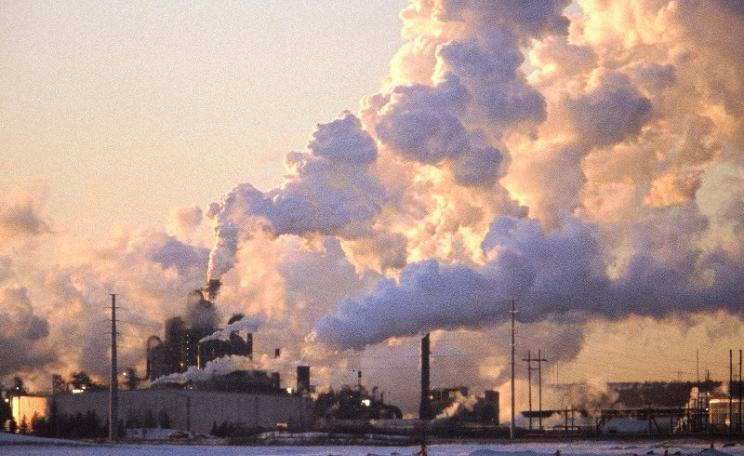The economic potential of central banks was witnessed during the bank bailout, leaving no apparent reason why they should not contribute to saving the climate with a fraction of the funds previously used.
A sustainable future is only possible if we can limit global warming to 2C.
To achieve this goal, an estimated $1,000 billion needs to be invested annually in developing climate-friendly renewable energy production. [1]
Due to the subsidies provided for fossil fuels, targeted support measures are needed to make renewable energy investments attractive to investors.
Financing such support measures is one of the main responsibilities of the Green Climate Fund (GCF) within the framework of the UNFCCC.
The Copenhagen Accord at the COP15 designated the GCF to obtain the "significant" amount of the promised "new and additional" $100 billion p.a. committed by developed countries by 2020. However, assuming that the GCF manages to obtain a sum close to the promised $100bn, two questions remain:
-
What is the likelihood of receiving $100 billion each year in form of non-repayable grants (and not largely in form of loans as a recent OECD report assumed [2])?
-
Will $100 billion be sufficient to make annual investments of $1,000 billion dollars profitable? Or will funding of at least 300 billion dollars be required?
Previous experience with financing commitments from tax or semi-public funds - such as revenues from emissions trading - indicate that the sums which will actually be disbursed will regularly fall short of the ones promised. For example, the current amount of grants provided to the GCF stand at $10 billion in total, not per year.
QE for the climate - a win-win solution
An alternative way of financing and providing sums larger than $100 billion to the GCF could be the involvement of central banks. These can never become insolvent in their own currency due to their monopoly of issuing the legal tender - even if they purchase non-performing assets.
The economic potential of central banks was witnessed during the bank bailout, leaving no apparent reason why they should not contribute to saving the climate with a fraction of the funds previously used. In order to do this, central banks would continue doing what most of them are currently doing to combat the effects of the financial crisis: Buying bonds to create new liquidity.
To finance the Green Climate Fund, central banks would need to buy 'Green Climate Bonds' issued by the GCF and finance concrete investment projects, rather than investing in government or corporate bonds. So, instead of talking about 'QE for the banks' we should focus on 'QE for the climate'.
When central banks buy new Green Climate Bonds, and record this in their balance sheets, they also gain a new monetary policy tool. The advantage of this new tool is that it leads directly to the purchase of new goods and services. The real economy is thus stimulated without a need for the usual detour of credit creation by private banks. This means that no new debtors and creditors need be found. The new money is created, debt-free.
The economic potential of central banks was witnessed during the bank bailout, leaving no apparent reason why they should not contribute to saving the climate with a fraction of the funds previously used.
The disbursal by the GCF would be directly into the system of the nation's banks, and their reserves at the central bank would rise. Should banks not need the additional excess reserves to refinance new credit creation (due to a lack of credit demand) they could reduce these reserves at the central bank, leading to a fall in the money supply.
The money creation resulting from the QE of climate measures (the purchase of Green Climate Bonds) and the subsequent money supply reduction would offset each other, as soon as the needs of real economy are satisfied.
Green Climate Bonds are effectively non-repayable
Green Climate Bonds should have a duration of at least 100 years and would ideally only bear small, if any, interest rates. Due to their very long term, Green Climate Bonds would become permanent assets of the central banks and thus form the foundation of regular money creation.
This would ensure that the GCF is at the receiving end of new and virtually non-repayable money, with which it can increase the profitability of many existing climate protection investments. Likewise, it is now possible to finance adaptation and mitigation measures that result in no immediate economically exploitable yield. In this case, the participation of private investors would have to be excluded.
If we assume that future, nominal, global growth will average 5%, the yearly global growth of the money supply must also be around 5% to avoid restrictive effects on the real economy.
The two biggest central banks, the US Federal Reserve and the ECB, could (with around $5tn as their total monetarily effective balance sheet total [3] and a long-term money creation requirement of 5%) potentially create $250bn per year without causing inflation and use this to finance (i.e. buy) long-term bonds of the Green Climate Fund.
As the dollar and euro currency zones together account for only 36% of global GDP, the total sustainable money creation potential of all central banks can be estimated at $700bn. [4]
The purchase of Green Climate Bonds for the assumed total of $100bn or $300bn would still give central banks enough scope to continue their normal monetary operations with the policy measures already in use. The current independency of central banks would not be affected by such a new 'QE for climate' programme.
A fast start is possible - with minimal inflation risk
Ideally, all UNFCCC member states and their central banks should be involved in this new 'Green Climate Finance System'. However, the financing via Green Climate Bonds could also be initiated in a smaller range through the participation of only a relevant number of members.
The advantage for states participating in the bond purchases would be that Climate Bonds purchased by their central banks would count towards their promised share of the $100 billion, without having to invest their own budget funds.
For the real economy, such additional demand would not lead to inflation since it will be globally distributed. Even if new money creation succeeds in stimulating total investment in renewable energy production and thus an additional demand of $1 trillion, this would be a small stimulus package rather than an inflationary risk when seen in relation to the global economic output of around $78 trillion dollars.
A broad array of benefits - not limited to climate
With the new Green Climate Finance System financed by 'QE for climate', sums of $100bn to $300bn p.a. can be channelled to the GCF in the course of ordinary money creation by central banks.
Already in the start-up phase, before the participation of all UNFCCC member states, funding of tens of billions of dollars worth of projects would be possible. A new Green Climate Finance System would benefit an array of groups:
-
the countries in which the climate protection investments take place (mostly Annex 2 states) get new energy generation systems which give the poorer part of the population access to energy, and with which the country can substitute imported energy. Simultaneously, they obtain additional currency flows that would usually require additional exports.
-
the commercial enterprises that carry out the projects
-
institutional investors which get a new, long-term investment option with solid and certain returns.
-
the countries where the technical equipment for climate protection projects is manufactured boost their exports and increase employment. They can also contribute to the GCF without needing to burden their budgets.
-
all world citizens present and future: through the massive expansion of renewable energy generation, a considerable amount of CO2 is saved.
Dr. Matthias Kroll is Economist at the World Future Council. He studied political economics, sociology and law at the Hamburg University for Economics and Politics and gains a PhD in financial theory and politics. Matthias taught economic policy at the University of Hamburg. Since 2010 he works for the Future Finance Commission of the World Future Council.
This article is based on the Future Finance - Policy Brief, No. 1, 4/2015: 'Financing the Green Climate Fund'.
References
1. 'The sum of 1 tn $ is required to achieve the 2 degree target'. Cf. Figueres, Christina in the Guardian of 14/1/2014.
2. Oxfam America: 'Behind the numbers: Getting to $100 billion in climate finance', October 7, 2015
3. Thanks to the various measures used by central banks to manage the financial crisis, their balance sheets became volatile. The figure of 5 tn $ is to be seen as a rough average. Cf. the current amounts in the ECB's monthly review and the Federal Reserve's Statistical Release, H6.
4. For a preliminary estimate of the sum involved, it is assumed that the balance sheet of other central banks are structurally similar to those of the ECB and the Federal Reserve.




